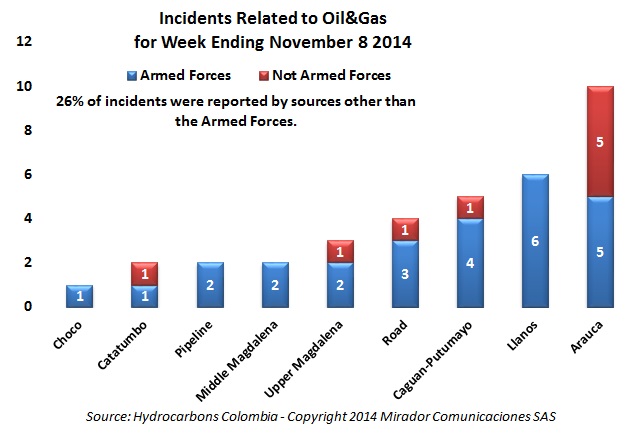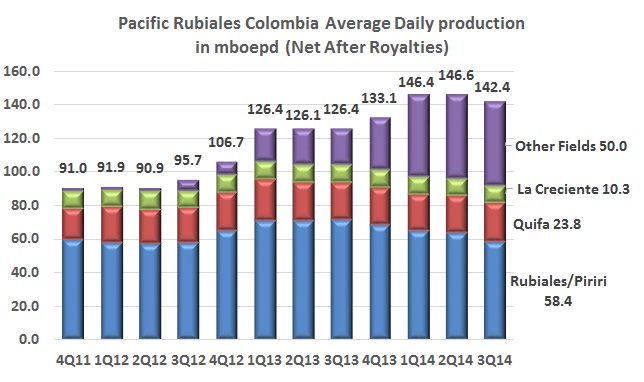
The count increased to 35 this week, exactly the recent and long-term average. Guerrilla-initiated activity increased sharply and Arauca returned to prominence.
In Casanare transportation companies have formed a group of committees to better organize the industry, in Huila accidents and congestion due to tankers have declined while road and bridge repairs took place in Casanare, Boyacá and Norte de Santander.
Parex Resources (TSX:PXT) posted production and financial gains, growing production 27% sequentially, while revenues increased 24.9%.
GasA recent congress for energy wholesalers in Cartagena served to take yet another look at the burning questions facing the natural gas industry of whether or not there is sufficient supply of the resource in the midterm.
A proposed bill to make modifications to the two year old royalty system has provoked responses from a number of Senators who are demanding the changes, and accusations from others that recent promises from the central government have already been cast aside.
USO Meta vice president Dario Cárdenas has been absolved of charges against him and released from prison a year and three days after being arrested for crimes associated with protests in Puerto Gaitán, Meta.
Another quarter passes, and still no decision from Ecopetrol (NYSE:EC) on the future of the Rubiales field. Meanwhile political pressure from an alliance led by the oil workers union (USO) and Senator Jorge Robledo mounts to return the field to Ecopetrol control.
President Juan Manuel Santos returned from his trip to Europe with words of support and a US$100M credit from Germany for transition in a post conflict scenario. But at home, the debate on the fundamentals of the peace process rages on.
Gran Tierra Energy (TSX:GTE) reported its third quarter earnings for 2014, and said that production and revenues had increased back above a dip experienced in the previous quarter. But considering its trend line over the last 7 quarters, its performance remains relatively flat, with oil prices and logistical issues on the OTA pipeline a recurring problem.

Production for Colombia’s largest private oil operator Pacific Rubiales (TSX:PRE) dropped in the third quarter of 2014 compared to the previous quarter, as water disposal issues continue to affect its flagship Rubiales field. Management looked to focus on the opportunities for other fields and expectations for Mexico, while ensuring that it would stay in Rubiales and that production would grow.